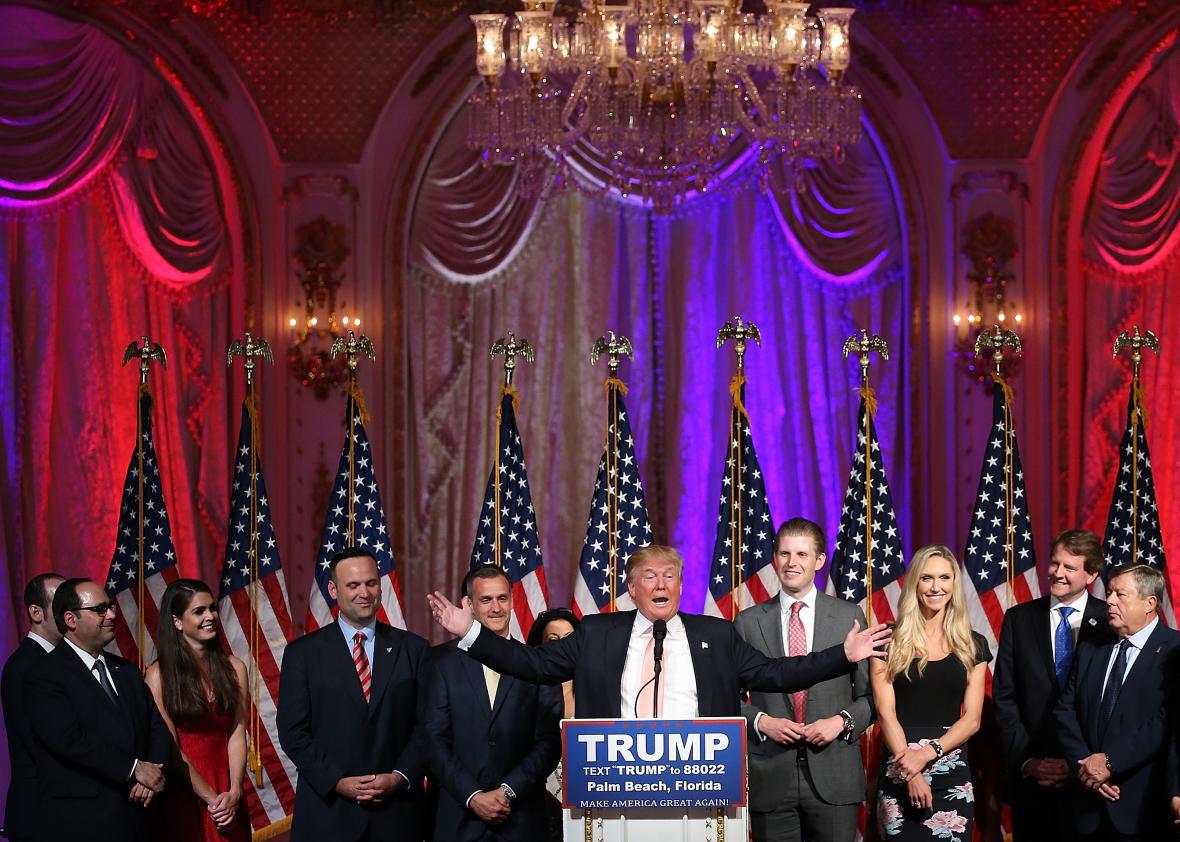While he was considered a tad unorthodox during his lifetime, the economist Hyman Minsky is now widely remembered today as the patron saint of financial crises, a figure beloved by those who believe markets are rarely rational, and that left to its own devices, Wall Street is apt to send the whole economy crashing down like Wile E. Coyote tumbling from a ledge. He famously argued that financial stability was itself a destabilizing force: Times of quiet lulled bankers into a false sense of security, causing them to make ever more dangerous bets that would eventually unravel. When asset prices collapse after a long debt-fueled runup, much as they did in 2008, it’s often described as a “Minsky moment.”
And, as it turns out, the man once used none other than Donald Trump as a case study. John Jay College economics professor J.W. Mason has a blog post Wednesday looking at a 1990 lecture Minsky delivered in which he framed Trump’s rise and fall as a classic bubble, similar to those that had blown up and burst in commodity exporters like Brazil and in Japan’s insane real estate market. “One of the puzzles of the 1980s was the rapid rise in the financial wealth of Donald Trump, author of Art of the Deal, and what else,” Minsky started, wryly. He continued:
Trump’s fortune was made in real estate. Many large fortunes have been made in real estate, since real estate is highly leveraged. Two factors made Trump somewhat unique—one was that he developed a fortune in a period of high real interest rates, and the second was that the cash flows on most of Trump’s properties are negative.
Trump somehow became a billionaire despite the fact that borrowing was expensive and his buildings lost money. But how?
Trump’s wealth surged because the market value of his properties—or at least the appraised value—was increasing faster than the interest rate. Trump obtained funds to pay the interest on his outstanding loans by increasing the draw under what in effect was a home equity credit line. The efficiency with which Trump managed these properties was more or less irrelevant—hence Trump could acquire the Taj Mahal in Atlantic City without much concern about the impacts on the profits of the two casinos he already owned. Trump was golden—he had a magic touch—as long as property prices were increasing at a more rapid rate than the interest rate on the borrowed funds.
It didn’t matter that Trump’s empire bled cash, according to Minsky, because the East Coast of the United States was in the midst of a giant real estate bubble, and commercial property prices were soaring. As the value of Trump’s holdings rose on paper, he could take new loans to pay off his old debt. In this sense, he was a lot like the subprime borrowers in 2005 and 2006 who relied on infinitely increasing home values and regular refinancings to keep themselves afloat.
Of course, Trump’s property values couldn’t skyrocket forever. And just as Mexico and Brazil sailed straight into debt crises when commodities prices dropped, Trump eventually faced his own reckoning when people started to doubt the inherent worth of Manhattan office towers and Jersey casinos. Writes Minsky:
The puzzle is that the lenders failed to recognize that the arithmetic of his cash flows was virtually identical with that of the developing countries; in effect Trump was Brazil in drag. In the short run Trump could make his interest payments with funds from new loans—but when the increase in property prices declined to a value below the interest rate, Trump would become short of the cash necessary to pay the interest on the outstanding loans.
And yet, Trump escaped the rubble of the real estate market with some of his personal fortune in tact. In 1990, Forbes still pegged his net worth at $500 million—not enough to make the billionaires list, of course, but not nothing. Which brings us to Mason’s observation. The key, he argues, is that Trump managed to cash out some of the equity in his businesses before things went sour. In this sense, he’s not that different from private equity guys who pile up the companies they purchase with debt in order to pay themselves a special dividend.
In this analysis, the repeated bankruptcies of Trump-controlled properties don’t undermine his claims of business success, nor are they just an incidental footnote to it; they are an integral part of how he got so rich. Because the flipside of extracting cash from his properties through “what was in effect a home equity credit line” is that there was less equity left for the entity that actually owned them.
I think this is a bit ungenerous: Trump’s ego is clearly tied up in the size of his empire, and unlike private equity firms that don’t care much whether a company goes bust once it’s been spun off, Trump’s personal net worth did plunge during his early 1990s travails. There’s a reason why he constantly brags about how little debt his companies now carry; he’s clearly terrified of leverage, perhaps irrationally so.
Still, I think it can be said the greatest trick that Donald Trump ever pulled was convincing other people to lend him their money. At least until he convinced them to give him their votes.
